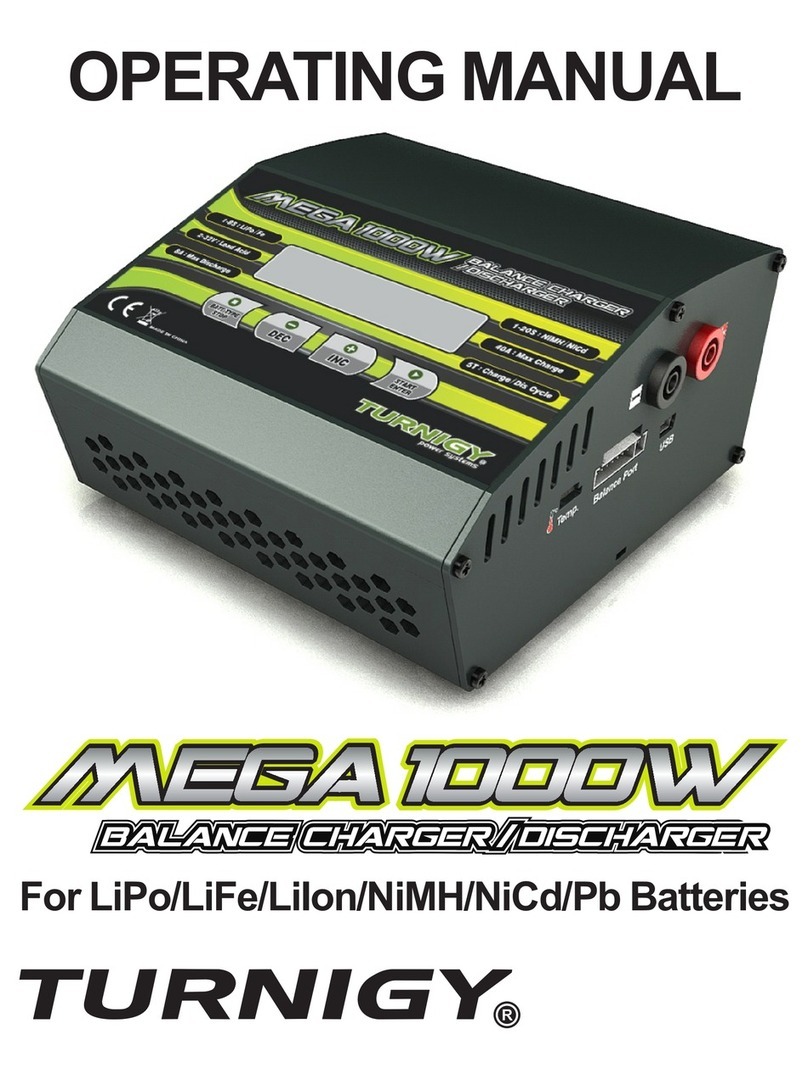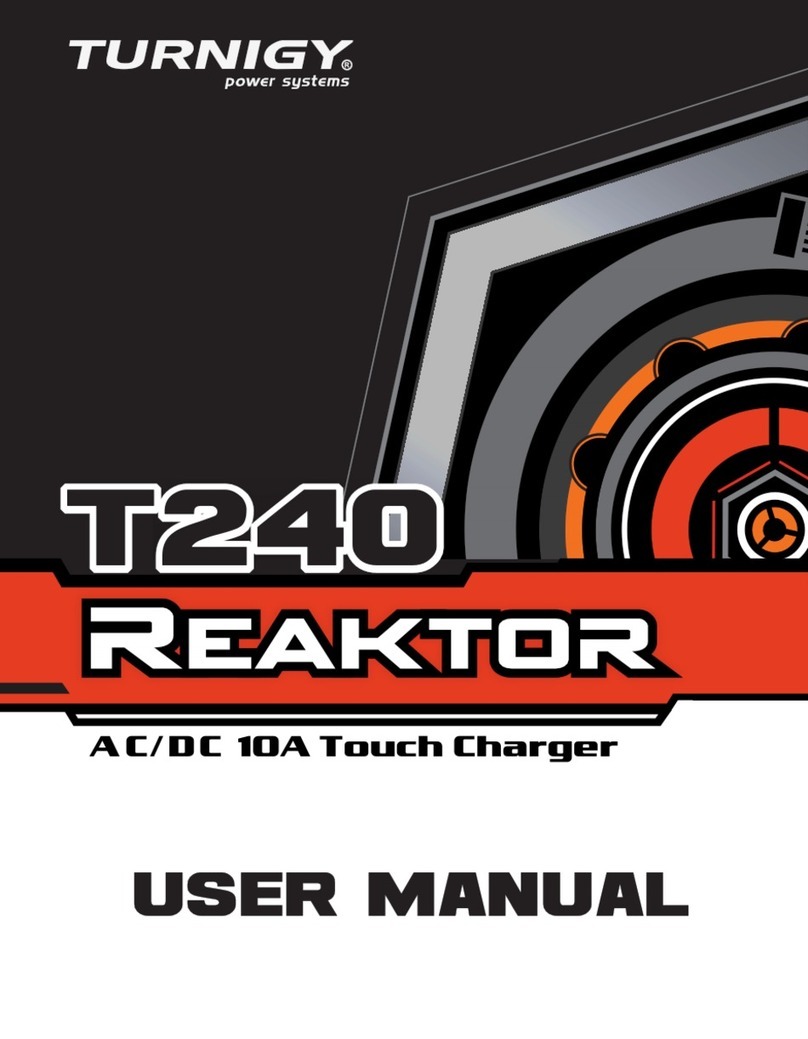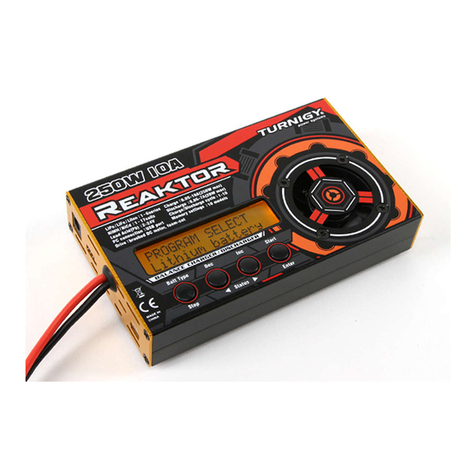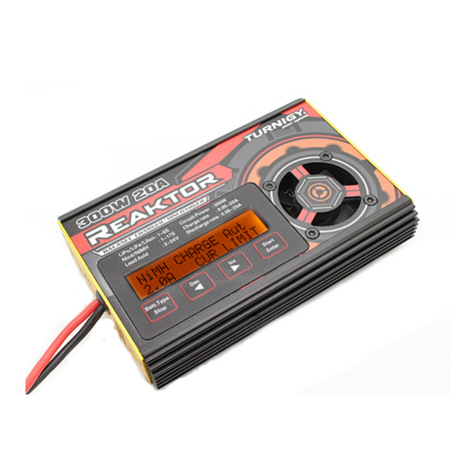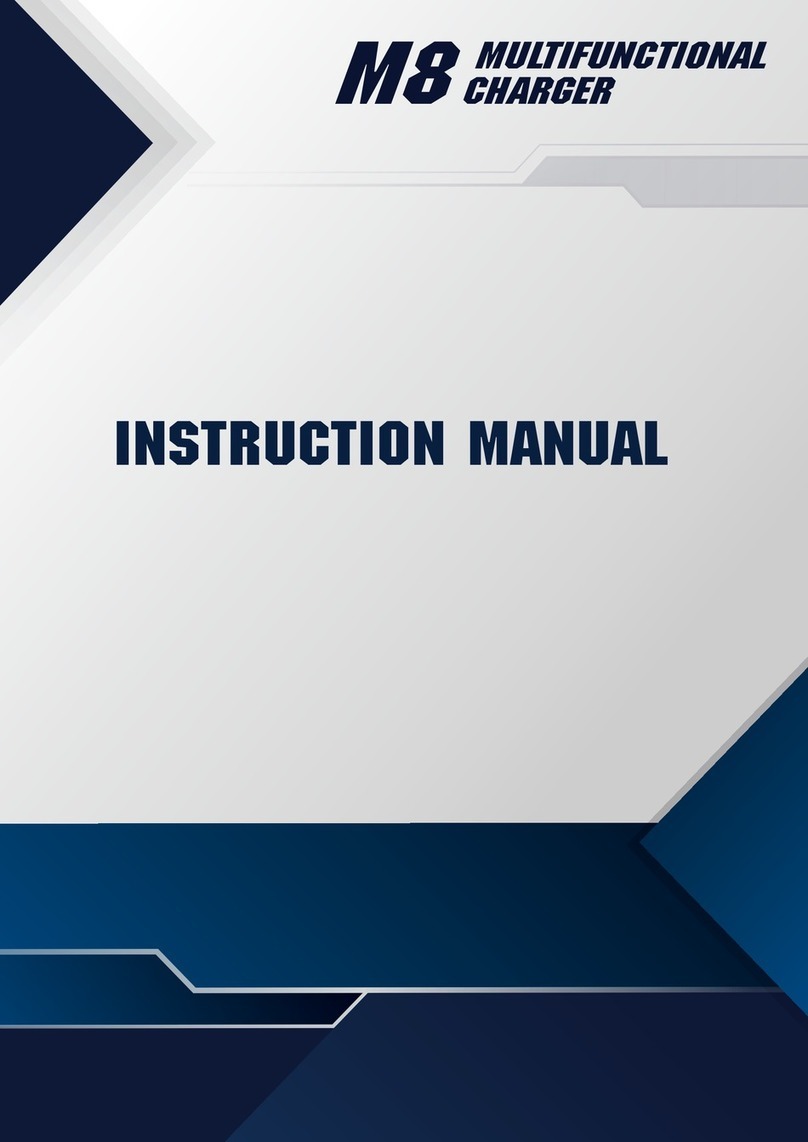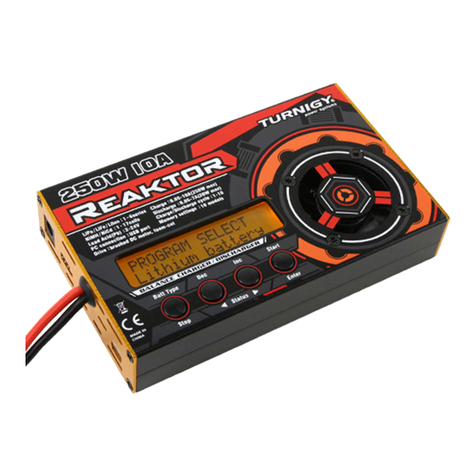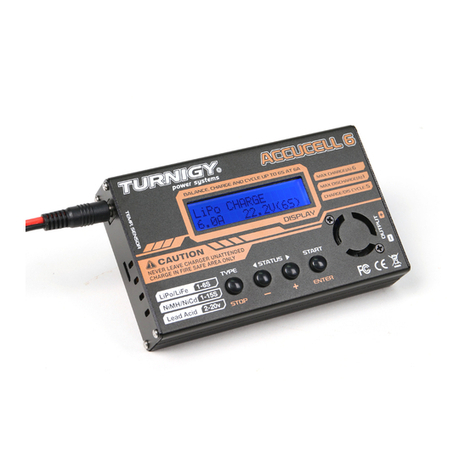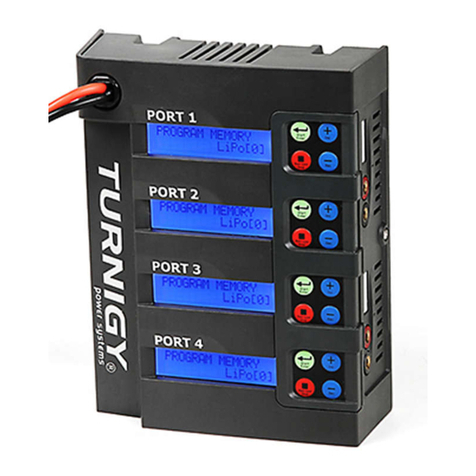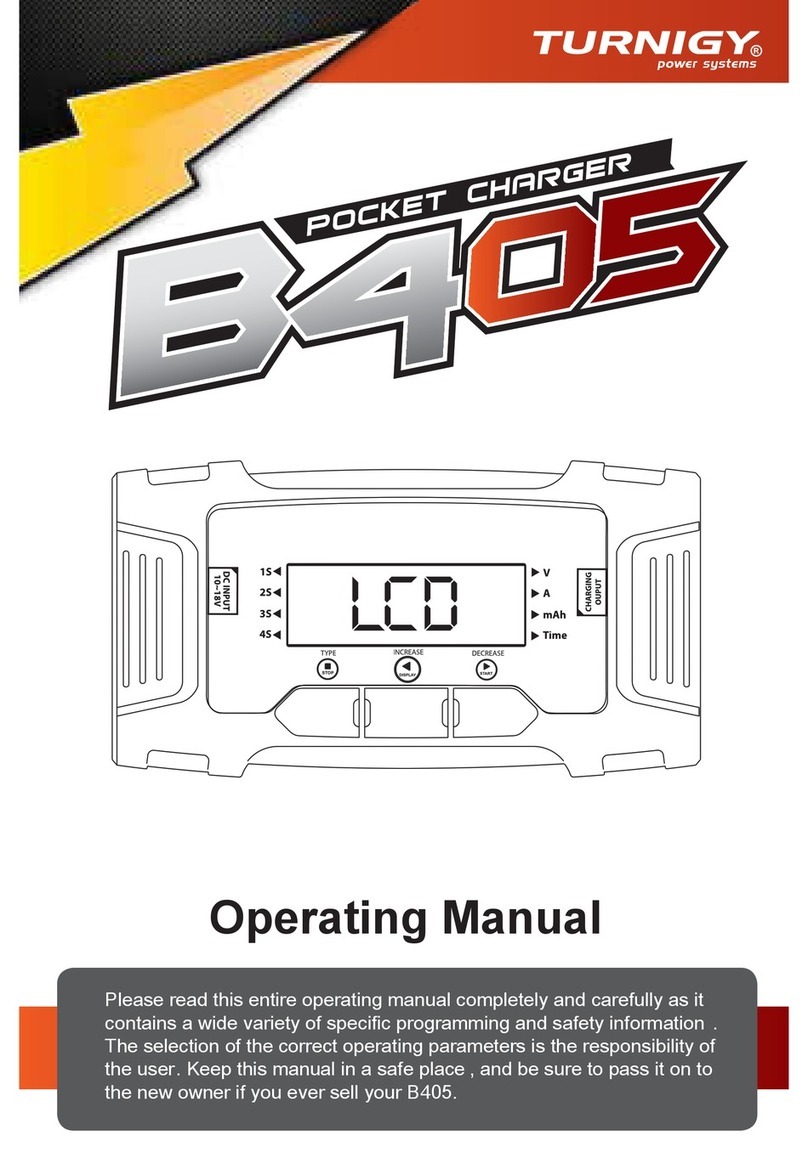2. Features:
-2-
Advanced Operate software
The charger can set current automatically when charging/discharging. Especially for the
Li-xx battery, it can avoid the explosion due to the wrong operation by user. All of them can
set according to the user’s choice. The charger provide balance port for Li-xx battery,
including 2, 3 ,4,5,6-cell five balance port.
High power and high performance circuit
The charger maximum output power is 50W, max. charging current is 6A, max. discharging
current is 2A. The high power cooling system ensures the CPU and operating system
normal work under the high power condition.
Li-xx Battery pack Voltage Balance
It has the balance function for the Li-xx battery, so, it don’t need extra balancer to balance
the voltage when charge li-xx battery.
Monitor and Balance the Li-xx battery
It can monitor the single cell when discharge. The discharging will stop and show the error
message when the battery voltage is abnormal.
Suit for various batteries
It can compatible with various batteries: Lilo, Lipo, Life, LiHv, Nicd, Nimh and Pb. Users
can charge/discharge different batteries by selecting the corresponding programs .
Fast charging and storage mode
The charging time can be effectively reduced when charging by setting the fast charging
mode; Storage mode can keep the rated voltage of the battery for a long time
Delta-peak sensitivity
(NiCd/NiMH) Delta-peak Sensitivity: It is the the program to turn-off charge current
automatically. The principle of operation is that the charge current will turn off and finish
charge when the battery voltage increased to the highest point and start to decreasing.
Capacity Limit: Charge capacity calculated according to charge current multiply charge
time. You can set a highest charging capacity value ,when charging capacity over the set
value, the program will forced to stop charging with an alarm.
Temperature Limit: The temperature of battery will increase when charging, if users set
the temperature limit value, then the charger will forced to stop charging with an alarm
when the temperature of battery reached to the set value(This function need to connect
